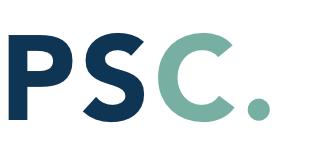Still evolving as it is, the Software as a Service/SaaS model demands a lot of figuring out from those who choose to run a business with it. Saas pricing strategy is a highly flexible model, and nowhere is that more clear than in the pricing strategies. There’s no one solution that fits every company. Rather, it’s about finding the right approach for you.
To that end, we’re going to look at some of the different pricing strategies that we’ve seen used in the SaaS market, their pros and their cons, and which could help you thrive in a subscription economy.
1. Flat rate pricing
This is as simple as pricing strategies get. You have one service and you have one price. It’s much like the old licensing model, but it does have the distinct benefit of having monthly recurring payments as an option, so you’re not asking clients to pay a chunk out all at once. Of course, you can still offer to bill annually for those who want it.
Flat rate pricing’s simplicity is its primary advantage. People aren’t going to get confused about different pricing points, meaning that you have a clear marketing message. However, if that message fails, you don’t have a better deal to offer them. Similarly, you could be missing out on getting even more revenue from customers who are willing to pay more for a premium service.
2. Tiered pricing
Much like flat rate pricing, this saas pricing strategy is still relatively simple in that customers using the same service are going to be getting the same price. The only difference is that the company doesn’t offer a single service, but tiered services. For example, they might charge $100 a month for the basic tier, $200 a month for a pro tier, and $500 a month for an enterprise tier. Some SaaS companies break this down even further, however, letting users select which features they want to sign up for, with a price assigned to each feature.
The problem with this saas pricing model strategy is that the different packages can get a little confusing, and some people might be so uncertain as to which deal is the best that they opt for none, and go with a service that caters to their niche in particular. However, if you can communicate the value of the different tiers effectively, not only does it appeal to multiple segments of your audience, but if they find their needs growing, you can upsell them on the next tier. This could increase the lifetime value of customers.
3. Freemium pricing
This saas pricing strategy is effectively just an evolution of the tiered pricing model, but with the addition of another tier: it’s free at the point of download. Many software packages start off as free, either with limited services, or limited use of service. For instance, Cloud-storage software might be entirely free for the first 50gb of files stored on it. Another might be free, but cut off certain features. Then, there tends to be a tiered system above “free”, though it is possible to combine the freemium approach with other models, such as the pay as you go model.
The benefit of this saas model pricing strategy is clear. Free software is very easy to adopt, and should the client like it, then they may be willing to pay for the full version, or for complete scalability to meet their needs. However, offering your software for free will undeniably deny you potential revenue. There are some fears that free users are less likely to have much loyalty to a product or be willing to pay for it because they may not value what they didn’t have to pay for in the first place. So tremendous care must be used with the freemium model.
4. Pay as you go
With this b2b saas pricing strategy model, the more a client uses the SaaS solution, the more they are billed for it. Use it less, and they spend less. This is popular with billing platforms, since it’s easier to justify charging with each transaction. If your clients are using a SaaS solution to make money, then it feels to them like they’re paying a bit of whatever they’re making.
Pay as you go makes the entry level very appealing. A low initial price gets rid of barriers to use. For those who use the products most, pay as you go models tend to include “premium” deals, so it doesn’t disincentivize heavy use too much. However, one of the biggest issues is that it’s hard to predict any kind of revenue, making it difficult to create financial forecasts. Some clients may also be turned off by the fact it’s harder for them to predict their own bills.
5. Per seat pricing
Another popular saas pricing strategy model, it’s relatively simple to understand. The more people using the SaaS solution, the more that they are going to pay for it. Users can be added or removed as is required. Some companies offer percentage discounts for each user added. Others will keep track of which users are “active”, meaning that customers aren’t billed for people who have accounts on the software, but aren’t using it regularly.
One of the reasons that this model is so popular is that it has scalability and upselling built into it. If a client likes it, then they are more likely to get more of their employees using it. It also remains relevant as a solution for them as their company grows, since they can simply add more accounts. However, if the solution fails to convince clients of its value, they may not be as willing to have new users adopt it. There is also an inherent risk of clients gaming the system by sharing logins across more than one user. Which SaaS pricing strategy will work for your business? With modern subscription billing software, the hassle of dealing with recurring payments is directly minimized, so you have more energy to spend on strategy and management of your clients. Hopefully, that ease combined with the information above helps you find the pricing strategy best suited for your SaaS business.











